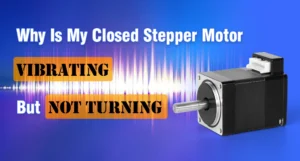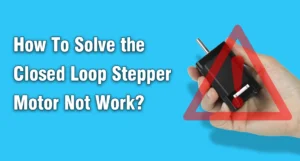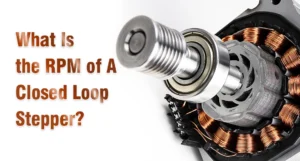In today’s rapidly evolving industrial landscape, the quest for efficiency and cost-effectiveness is paramount. One area that has seen significant advancements in the realm of motion control systems, particularly closed loop stepper motor systems. These systems have emerged as game-changers in various industries, offering not only superior performance but also remarkable cost-effectiveness over time.
Introduction to Closed Loop Stepper Motor Systems
What are closed loop stepper motor systems?
Closed loop stepper motor systems, combine the best features of traditional open-loop stepper motors and closed loop systems. They incorporate feedback mechanisms such as encoders or resolvers to continuously monitor and adjust motor position, ensuring precise control and accuracy.
Understanding Cost-Effectiveness
Cost-effectiveness in industrial systems refers to achieving optimal functionality and performance while minimizing expenses. It encompasses factors such as initial investment, maintenance costs, energy consumption, and overall efficiency.
For businesses, ensuring cost-effectiveness is paramount to maintaining competitiveness and maximizing profitability in the long run.
In the context of motor systems, it entails achieving the desired level of performance while minimizing operational costs over the system’s lifecycle.

Benefits of Closed Loop Stepper Motor Systems in Cost-effective
Closed loop stepper motor systems offer a plethora of advantages that contribute to their cost-effectiveness.
Firstly, their inherent precision and accuracy ensure consistent and reliable operation, minimizing errors and wastage.
Moreover, these systems boast enhanced performance capabilities, enabling faster production cycles and improved throughput.
Additionally, their energy-efficient design helps reduce power consumption, leading to significant savings in operational costs.
Factors Influencing Cost-effectiveness In Motor Systems
Several factors contribute to the cost-effectiveness of closed loop stepper motor systems, including initial investment, maintenance expenses, energy consumption, and overall system reliability.
Cost Analysis of Closed Loop Stepper Motor Systems
- Initial investment vs. long-term savings
While closed loop stepper motor systems may have a higher upfront cost compared to open-loop systems, their long-term savings potential outweighs this initial investment. The improved performance and reliability of closed loop systems lead to lower maintenance expenses and higher productivity over time, resulting in a lower total cost of ownership.
Comparison with open-loop and servo motors
When comparing the cost-effectiveness of closed loop and open-loop stepper motor systems, it’s essential to consider the total cost of ownership rather than just the initial purchase price. While open-loop systems may appear cheaper upfront, their inferior performance and higher maintenance requirements can result in higher overall costs in the long run.
Furthermore, when compared to alternative motion control solutions such as servo motors, closed loop stepper motor systems offer a compelling cost advantage without compromising on performance.
- Reduction in maintenance costs
closed loop stepper motor systems require minimal maintenance due to their self-correction capabilities and robust design. This reduction in maintenance requirements translates into significant cost savings over the system’s lifespan, making them a cost-effective choice for industrial applications.
- Energy efficiency benefits
Another factor contributing to the cost-effectiveness of closed loop stepper motor systems is their energy efficiency. By optimizing motor performance and reducing power consumption during operation, these systems help lower energy bills and minimize environmental impact, further enhancing their economic viability.
- Minimized downtime and production losses
The superior reliability of closed loop stepper motor systems translates into fewer unplanned downtime events and production losses. By ensuring consistent performance and minimizing the risk of equipment failure, these systems help businesses maintain continuous operations and meet production targets, ultimately driving cost savings.
Real-world Applications
Closed loop stepper motor systems find extensive applications across diverse industries, ranging from automotive manufacturing to pharmaceutical production.
In manufacturing and automation, these systems are utilized for precise positioning and control of assembly line machinery. In robotics and CNC machining, closed loop stepper motors enable accurate movement and intricate machining operations. Similarly, in 3D printing, these systems ensure precise layer deposition, resulting in high-quality printed objects.
Case Studies
Numerous companies have experienced firsthand the cost-effectiveness of closed loop stepper motor systems. For instance, a leading automotive manufacturer reported a significant reduction in production costs and downtime after implementing closed loop technology in their assembly line robots. Similarly, a pharmaceutical company witnessed a substantial increase in productivity and yield following the adoption of closed loop stepper motors in their packaging machines.
Conclusion
In conclusion, the cost-effectiveness of closed loop stepper motor systems makes them an indispensable asset for modern industrial automation. By offering superior performance, reliability, and efficiency, these systems deliver maximum value over their lifecycle, helping businesses optimize their operations and stay competitive in today’s dynamic marketplace.
FAQs
Q1: Are closed loop stepper motor systems suitable for all applications?
A1: While closed loop stepper motor systems excel in many applications, their suitability depends on factors such as precision requirements, load characteristics, and operating conditions. It’s essential to evaluate specific application needs before selecting a motion control solution.
Q2: How do closed loop stepper motor systems compare to traditional servo systems in terms of cost-effectiveness?
A2: Closed loop stepper motor systems offer comparable performance to traditional servo systems at a lower cost, making them an attractive option for budget-conscious applications that require precise motion control.
Q3: Can existing open-loop stepper motor systems be upgraded to closed loop systems for cost-effectiveness?
A3: Yes, many manufacturers offer retrofit kits and upgrade packages that allow existing open-loop stepper motor systems to be converted into closed loop systems. This can be a cost-effective way to enhance performance and reliability without replacing the entire system.
Q4: What factors should businesses consider when evaluating the cost-effectiveness of motion control systems?
A4: Businesses should consider factors such as initial investment, long-term maintenance costs, energy efficiency, productivity gains, and overall system reliability when evaluating the cost-effectiveness of motion control systems.
Q5: Are there any emerging trends or technologies that could further improve the cost-effectiveness of closed loop stepper motor systems?
A5: Yes, ongoing advancements in control algorithms, sensor technology, and predictive analytics hold the potential to further enhance the cost-effectiveness of closed loop stepper motor systems by improving performance, reliability, and efficiency.
Q6: Are closed loop stepper motor systems suitable for small-scale businesses?
A6: Yes, closed loop stepper motor systems can benefit businesses of all sizes, offering cost-effective automation solutions tailored to specific needs and budgets.
Q7: Are there any industries where closed loop systems are not recommended?
A7: While closed loop stepper motor systems offer benefits across various industries, their suitability depends on specific application requirements and operational considerations. It’s essential to consult with industry experts to determine the best solution for each scenario.





